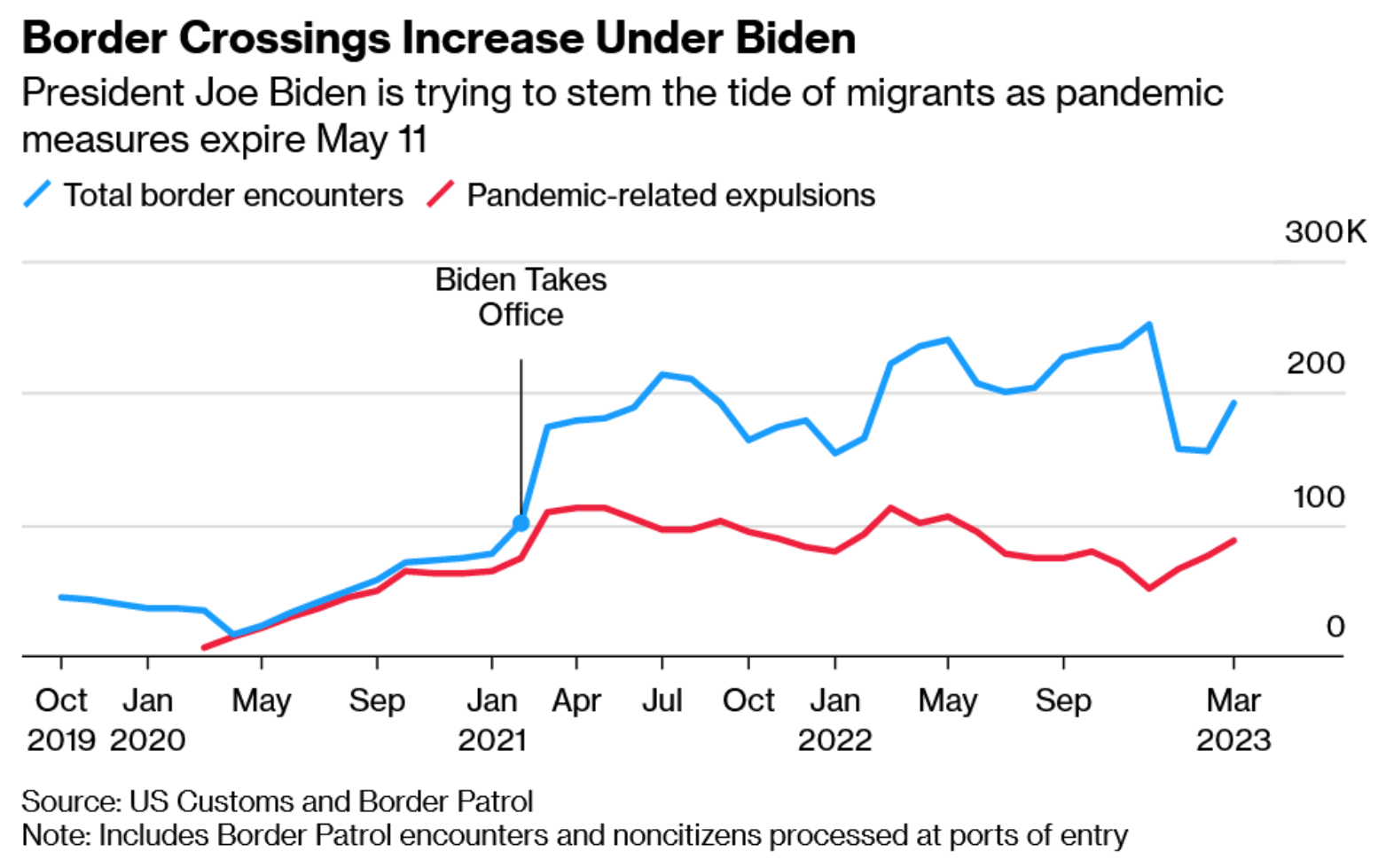The Daily Escape:

Eastern Sequoia Canyon NP viewed from Mt. Whitney trail, CA – April 2017 photo by Peerman Craft Photography
The federal government is expecting a surge in migrants at the southern border after next week’s lifting of Title 42, a pandemic-era policy that has allowed the US to refuse to process asylum claims on public health grounds. In anticipation, the Biden administration is preparing to deploy an additional 1,500 troops to the southern border for 90 days.
Those troops are on top of about 2,500 who are serving there currently. None of the soldiers are armed. They are largely performing administrative tasks that free up Customs and Border Protection (CBP) staff to handle the anticipated surge of migrants.
This could be a critical political moment for Biden, who’s just launched his 2024 reelection bid. We seem to be on the verge of another potential border crisis, which brings the certainty of new attacks by Republicans. The GOP has been hammering the administration, saying Biden’s immigration plans are too little too late.
When Title 42 is lifted, CBP will rely on the existing Title 8 law, under which any individual who is deemed ineligible to be in the US faces a five-year ban on readmission – and criminal charges if found crossing illegally.
On Wednesday, US and Mexican officials agreed on new immigration policies. Under the agreement, Mexico will continue to accept up to 30,000 migrants from Venezuela, Haiti, Cuba and Nicaragua who are turned away at the US border; and up to 100,000 individuals from Honduras, Guatemala, and El Salvador who have family in the US will be eligible to live and work in Mexico.
The US is accepting 30,000 people per month from Cuba, Haiti, Nicaragua, and Venezuela for two years and offering them the ability to work legally, as long as they enter legally, have eligible sponsors and pass vetting and background checks. We’re continuing to turn away migrants from those four countries who cross the border illegally.
We’ve been following the same ad hoc approach to immigration for the past several administrations: We find a temporary solution that can handle a surge in migrants while not providing an open door for all who wish to enter the US.
We share this problem with most other rich countries. On Tuesday, the World Bank’s latest World Development Report said that about 184 million people across the world now live in countries where they’re not citizens. About 37 million of the total are refugees, a number that has tripled over the last decade.
Most of the transit happens through Central America before migrants reach the southern US border. Border security isn’t rigorous enough there to stem the northward flow. Recognizing that problem, the administration announced that it will set up regional processing centers for migrants to apply to come to the US. These centers will be located in Colombia and Guatemala, two countries migrants often pass through on their way to the US-Mexico border.
Deciding who gets to stay in the US is a bigger challenge when the migrants have few job skills and they’re not seeking asylum. We differentiate between asylum seekers and economic migrants. With a current backlog of 1.3 million asylum cases to be heard (equal to 4.25 years), the system is clearly broken.
The question is what should we do to stop/slow the flow of hundreds of thousands of migrants attempting to cross our southern border? Bloomberg shows the scale of the problem:

What’s the answer to this? Wrongo doubts that there is ONE answer.
Do we create a kind of reverse Berlin Wall like Trump tried to do? If it became a militarized border, we could surely cut down on the migration and the southern border would be controlled. This is the wet dream of the anti-immigration hawks. But the cost of building and manning the wall with soldiers would be ruinous, and to date, militarized borders aren’t who we are as a country.
Do we undertake nation building in Central and South America, hoping that those countries can become more attractive to their potential migrants? America’s track record with nation-building is terrible. And think about the cost, which could be far greater than the cost of a militarized wall. Think about how much money would be skimmed into the pockets of local politicians.
But we can’t just leave our borders open. Open borders are a sign of a government that has lost control of its geography. It would ultimately lead to a reality that no American wants. This is the specter that instills fear into most Americans about the growing migration problem.
It appears that we’re going to continue using an orderly throttling and vetting process at the southern border to decide who among this new surge of migrants is allowed into the country. The bigger question is what should our immigration policy be going forward? We haven’t had immigration reform since the 1980s. We’re unlikely to have reform any time soon.
Biden and the Democrats are vulnerable if they can’t articulate a plan (that they can back with numbers) that shows the American people what we’re doing to control immigration. Developing a clear position on immigration could draw significant public majority support.
There are plenty of Democrats and Independents who are strongly against migration. So Biden needs to show progress soon by demonstrating that we’re controlling the problem.
